YOU.COM BY JESSI JOHNSON
By Jessi Johnson
About three and a half years ago, I obtained my mortgage broker license. It was a good day, but now what do I do? I can ramble on for hours about marketing but none of it means anything unless you have one key tool, a website. This wonderful instrument should be a staple in the daily operations of every broker, especially when looking towards the years ahead. Without a sharp sword, how can a warrior fight? A sharp website can be viewed as a glorified business card. Would you go to networking event without business cards? Of course not, so why would you run your business without a site? There is a very good chance you may already have a website and if this is the case, I hope my article can provide suggestions on how to increase your traffic. I will say it now and I will say it again, get a website and be discovered.
There a two main types of mortgage broker websites. The first is a supportive tool where potential clients can look you up online, check out your pretty pictures and hopefully call you or apply online. The second is a marketing tool used to generate business. I myself have both, but certainly don’t suggest that for everyone. Maintaining a good website is a lot of work, ever more work when you have two. First decide which type of website you are going to create, then progress from there. This is very important because your first step or phase of website creation is to pick a domain. Your domain will appear in the URL (Uniform Resource Locator) which is the small box on your browser where you type in a website address. This is the most important item because it is the ultimate key word for search engines. Take your time when deciding the domain. If you are going to create a supportive website then the domain is simple, www.yourname.com. Dot com’s are not so crucial these days. Dot ca will work great but there are others to consider: dot me (.me) or dot tv (.tv), etc. If you are creating a marketing site with a specific niche, then I would take more time with your domain decision.
Once you decide on your domain, you need to create a budget for your website creation. There are cookie cutter websites out there for about $500, or you could drop as much as $20,000. It all depends on how crazy you want to go. Do your research and get quotes in writing with detailed breakdowns of what is being offered. You should expect to pay 2-5k for something good, and I suggest using Ballistic Arts (www.ballisticarts.com) for this price range. Anyone reading this article who knows me personally, I am very particular when it comes to business (or in general according to my fiancée), and therefore I do my research and you can trust my suggestions.
So now that you have an idea of what you are going to do and who is putting it together, we must decide on a backend. This is the program used to update and maintain your website. Yes you can pay someone each month to update your site for you, or you can use a nice backend tool like WordPress. This allows you to easily update your website without throwing money away by the hour. Both my sites are designed on WordPress (www.jj.jessirealestate.ca and www.firsthomeinfo.ca). Different people are comfortable with different levels of technology, so do your research and select what works for you. Your next step is to decide on key words, these wonderful words are to be used thoroughly throughout your site and will be what people type in a search engine to find you. I suggest choosing ten and sticking with them.
Now comes the fun stuff, creating content. Good content helps generate traffic. It is suggested to have to least 250 words of copy per page. Write everything on a word document to be easily copied and pasted onto the site. Once you have a good enough idea of your content, you need to create a layout. Try to make this simple and easy to navigate. Your web designer should have many ideas for you, I suggest researching other quality sites in your industry for ideas. There are some important items in these current times to remember when creating your layout with a website for a mortgage broker in mind:
Make sure to have your “follow me” social media links to expand your network
Have a subscribe now and unsubscribe for your newsletter
Post testimonials from your clients about how great you are
Don’t forget your online mortgage calculator (hint: send this link to all your realtors)
Have an area for reciprocal industry links to high quality sites, this will help generate traffic
Offering free reports is a great way to increase your database
If you post rates, keep them current! It looks terrible having outdated stats
Last but certainly not least, make sure to have an online application on your site
Instead of programming or designing an online application, I suggest talking to Morweb. In my option they are the superior choice for a program to work on mortgage deals and their online applications are excellent.
Remember to collect ID and thoroughly review documents if you don’t meet the client when using an online application.
The most consistent expense you will have with running a website is your hosting cost. This can range from about ten dollars a month to hundreds depending on the service. Hosting is the location for your website and data to be stored. If you are just starting out, www.godaddy.com will have some good cost efficient hosting packages for you. Their customer service is reasonable but you will eventually need to upgrade if your site grows with traffic. Now I use a company called Robson Inc, they are rock-solid and worth every penny.
So you have a website, now what the heck do you do? First off, make sure you have a blog or at least an area where you can continuously add content. Search engines love new content and so do your viewers. Remember to use your keywords and keep focused on your niche. The word of the day is SEO, this stands for search engine optimization. The concept is to maximize your sites potential to be found on search engines. By using certain strategies in your website design, this will gain you higher rankings with the search engines. A high Google ranking means more visitors which generates more business. Google isn’t the only search engine but it is certainly the largest. Don’t expect overnight success from your website. If done properly you will see results in good time. I am by no means the master of SEO and this is always a learning process. Internet will be your best friend if you learn how to use SEO.
Marketing your site is another step but prior to this you need to have your site connected to Google Analytics. This magnificent tool monitors your site traffic and marketing campaigns. By now you should already have a blog on your website and some content, now let’s work on showing this to the world. There are many ways to generate traffic. You can read and comment on relevant industry blogs with links to your site. Advertising on Google Adwords or Facebook can be successful but certainly not cheap. Personally, I suggest using this only after the above stages are complete. Here you have the option of paying on a per click basis or per view. If you would like to learn more about advertising your site, I suggest checking out www.reachd.com and attending a few seminars.
I remember one day this past summer, the sun was shining, the temperature was about 35 degrees and I was working from home where the pleasures of air conditioning don’t exist. The fan was on full blast but I needed more circulation. My front door doesn’t stay open on its own so I had to prop it up, after looking around I discovered the perfect tool, a Yellow Pages book. Do you get my point here? Gone are the days of flipping through countless pages to look something up, if people want anything they look for it on Google. The Yellow Pages are archaic; search engines will make you money! Get a website and be found.
Steps:
Phase one:
Figure out your niche
Buy a domain (check out dotster.com or godaddy.com)
Create a budget and find a web designer
Decide on a back end (wordpress, etc)
Phase two:
Decide on ten “key words”
Start writing content
Create a website layout
Purchase Hosting (I suggest Robson inc)
Phase three:
Create your blog or area for continuous content additions
Design your site to be SEO friendly
Decide how you are going to market your site
Tell EVERYONE about your awesome site

